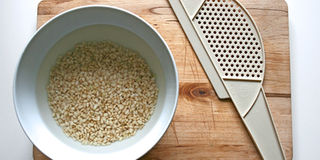Why sprouted grains are all the rage

Consumption of grains such as sorghum is still limited due to poor sensory qualities. However, through sprouting, it can develop unique sensory attributes that improve the functional characteristics of a resultant products. FILE PHOTO | NMG
What you need to know:
- Most homes carry out sprouting/malting to get a product referred to as kimera (malted finger millet) in Luhya language and Kimeru, in opaque beer production (busaa).
- During the soaking, the moist environment encourages mould and microbial growth, hence it is advisable only to select grains that are clean and healthy.
- The process breaks down starch, proteins and other large compounds to simpler ones, which increases the nutrient density.
- Formulation of sprouted grain products depends on the taste and preferences of the consumers. After germination, we can have two products, that is, dry and wet sprouts.
There is a silent increase in demand for sprouted/germinated/malted foods in the market. They are quite popular among the Asians because of their superior nutrient profile and ease of digestion. They taste better and are healthier than the refined or whole grain products.
What are sprouted?
They are whole grain seeds that include ancient ones such as rice, wheat, sorghum, millet, barley, buckwheat, teff and amaranth and which have just begun to germinate.
The whole grains are left to soak for sprouting to take place at a predetermined time with set conditions, involving a controlled amount of moisture and warmth.
Most homes carry out sprouting/malting to get a product referred to as kimera (malted finger millet) in Luhya language and Kimeru, in opaque beer production (busaa).
Alternatively, the malting can be carried out in food manufacturing plants, especially in brewing industry using specialised equipment.
During the soaking, the moist environment encourages mould and microbial growth, hence it is advisable only to select grains that are clean and healthy.
Also, if moisture is too much, the sprouts may rot, ferment or even drown. Time of sprouting is equally important. If the shoot is allowed to grow indefinitely, it will become a grass stalk, hence unusable for humans.
Furthermore, because of food safety requirements, after sprouting, it is advisable to dry the sprouts as a step to kill any micro-organisms and prevent any further germination.
Why sprouted grains?
They have a lot of documented health benefits. During germination, the process results in unlocking of the grain potential.
The process breaks down starch, proteins and other large compounds to simpler ones, which increases the nutrient density.
Moreover, anti-nutrients such as tannins and phytate, a form of phytic acids, are broken down. These compounds are essential in plant growth and grain preservation.
Tannins, for instance, prevents mould or insect damage on the grains. However, they bind on proteins, vitamins, and minerals decreasing their absorption and availability.
Generally, sprouted grains have an increased percentage of nutrients such as iron, vitamin C, zinc, folate, magnesium, in vitro protein, starch digestibility, and soluble sugars. Through the process, sprouted grains are easy to digest because they contain less starch than whole grains.
Globally, it is an area that has elicited a lot of interest among researchers, with studies documenting a myriad of health benefits.
BENEFITS
Brown rice is a reliable, healthy option, but by sprouting it, you increase some health benefits such as antioxidants, total phenolic content and flavonoid content, which reduces the risk of cardiovascular diseases and decreased blood pressure. Sprouted barley has same advantages as those discussed above.
Sprouted (malted) grains such as sorghum and millet can be used as weaning foods for infants and as easily digested foods for the elderly. They are a rich source of iron, manganese and calcium.
Sprouting of buckwheat increases the concentration of rutin and quercetin, which are known to have anti-inflammatory effects.
In addition, sprouted buckwheat is associated with a lower systolic blood pressure, therefore, protecting the endothelial cells from oxidative stress.
Consumption of grains such as sorghum is still limited due to poor sensory qualities. Through sprouting, however, it can develop unique sensory attributes that improve the functional characteristics of a resultant products.
Formulation of sprouted grain products depends on the taste and preferences of the consumers. After germination, we can have two products, that is, dry and wet sprouts.
Dry sprouts, (most common), happen when the germinated grains are dried and later milled into flour for the manufacture of bread, buns, tortillas, muffins, bagels, and crackers, or in the formulation of thick porridge (ugali) and thin porridge (uji) for infants and elderly.
While in wet sprouts, the germinated grains are not dried but consumed by cooking the fresh sprouts. Some of the formulated products may require refrigeration, while others do not, but other processing techniques such as extrusion before consumption helps.
However, some sprouted products on sale may not be entirely made of sprouted grains. It is advisable to read the ingredients list to be ascertained of the product.
The writer is based at the Department of Dairy and Food Science and Technology, Egerton University.




